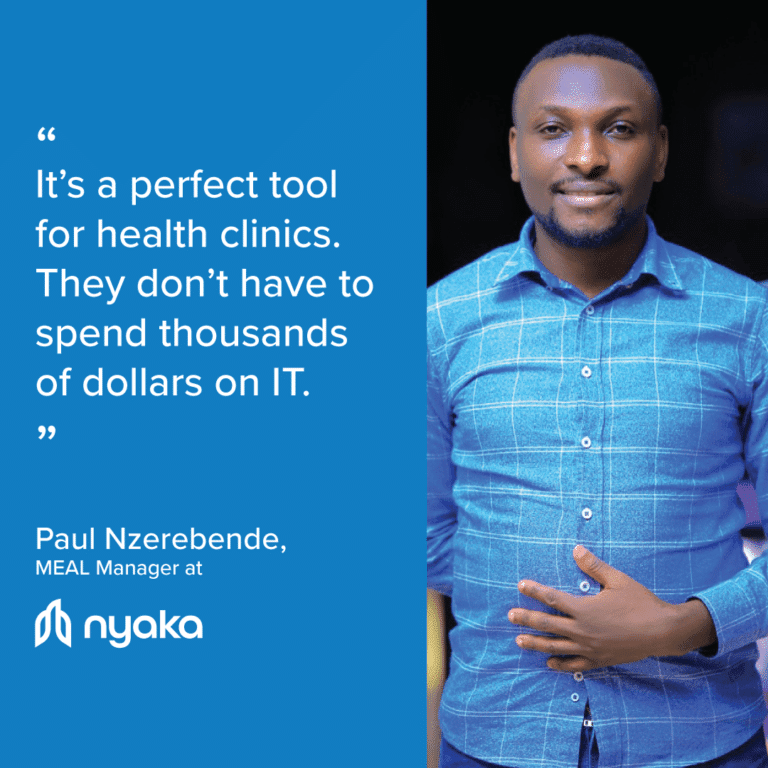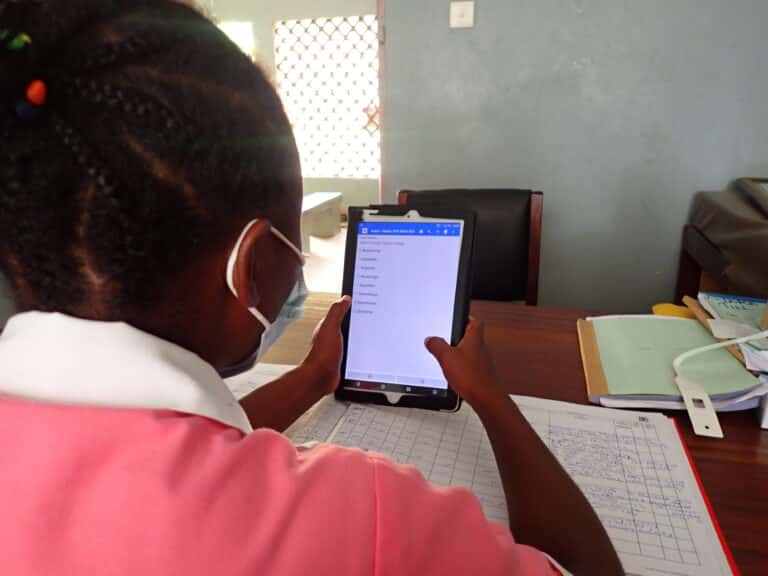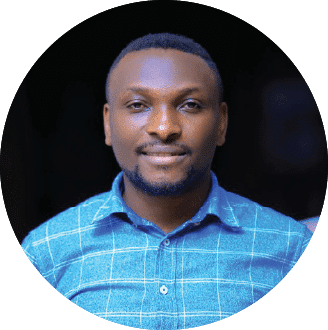How Nyaka built an Electronic Medical Records (EMR) System with SurveyCTO

Meet Nyaka
Established in 2001, Nyaka is an organization in Uganda, Africa that provides for vulnerable children. They surround each child with a comprehensive system of care, supporting their medical, nutritional, educational, safety, and family needs.
Offices: Kampala, Uganda / East Lansing, Michigan, United States
Sector: Humanitarian aid
Use case: Community healthwork, Global Health
Employees: 50-100
The Challenge: Efficiently tracking medical records to provide high-quality care
Paul Nzerebende, the Monitoring, Evaluation, Accountability, and Learning (MEAL) Manager for Nyaka, knew there was a better way to track medical records and help patients. In 2021, he was monitoring the health of communities in the hardest to reach areas of Uganda. Like many development organizations in low-to-middle-income (LMIC) countries, Nyaka was reliant on pen and paper for data collection in their community health work due to poor internet connectivity and budget restrictions.
Nyaka operates two medical clinics, which carry out over 9,000 medical consultations and administer 500+ vaccines to children each year. Given the volume of their work, paper medical records were hard to track, analyze, and access. In Paul’s own words, managing paper medical records was “tedious, time-consuming, and prone to errors.” This paper system also limited the medical guidance Nyaka’s providers could give to their patients, as they weren’t able to quickly find and review each patient’s medical data during clinic visits.
The Solution: SurveyCTO and its Google Sheets integration to manage patient records
Paul had used SurveyCTO for many years before joining Nyaka. As a long-time user, Paul believed that the SurveyCTO platform had all the necessary functionalities to create a highly efficient digital system so Nyaka’s community clinics could collect, analyze and visualize patient data.
In 2021, Nyaka adopted SurveyCTO, which allowed them to digitize all of their data collection processes. They now use SurveyCTO for digital data collection, medical record tracking, project monitoring, impact evaluations, and more.
After Nyaka began using SurveyCTO, Paul went to work on his vision: Building Nyaka an electronic medical records (EMR) system. If you’re not familiar with the term, an EMR is like a digital version of a health chart that a doctor might write notes on. Today, EMRs are how most medical records are stored, and there are software programs for EMR systems. Paul wanted to set up an EMR for Nyaka’s clinics to empower their health team to easily visualize patient data on the spot so they could give patients medical advice right away, and to streamline the clinics’ operations.
Leaning on his SurveyCTO and Google Data Studio experience, Paul created an EMR using interactive dashboards. Data for the dashboards is collected in SurveyCTO and then published to Google Sheets using the SurveyCTO and Google Sheets integration.
For Nyaka’s community health workers, the process was simple: as they treated patients, they used their mobile device to quickly pull up patient data in the dashboard. SurveyCTO also made collecting patient data on those mobile devices a breeze with the SurveyCTO Collect app.

The Results: Processes that took 2-3 weeks now take 10 minutes
Paul’s EMR system was a success. It allowed the Nyaka team to manage patient data on the go. Access to centralized patient data and interactive dashboards meant providers are able to see up-to-date information on patients during visits, and provide them with immediate guidance on any medical concern.
Paul’s initiative transformed community health work for Nyaka. Instead of a slow process reliant on pen-and-paper, Nyaka’s data collection and management became more efficient, more accurate, and more secure.
“What we used to do in two or three weeks is now done in less than 10 minutes,” Paul said.
With the EMR dashboards, Nyaka’s medical team was also able to easily view data on overall clinic disease diagnoses, immunizations, and more. The EMR also made information readily available, saved time, reduced clinic costs, enhanced delivery of medical services, increased Nyaka’s capacity for data analysis and insights, and increased their adoption of best practices for data confidentiality, privacy, and protection.

Want to learn more about Paul’s EMR system and how Nyaka helps orphan and vulnerable children? Watch the webinar to learn more.
Do you have a big vision for transforming your community health work? We can help you bring your ideas to life.
